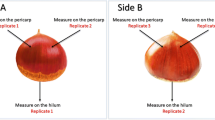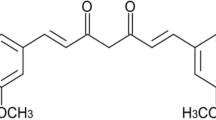Abstract
Common hazelnuts are widely present in human diet all over the world, and their beneficial effects on the health have been extensively investigated and demonstrated. Different in-depth researches have highlighted that the harvesting area can define small variations in the chemical composition of the fruits, affecting their quality. As a consequence, it has become relevant to develop methodologies which would allow authenticating and tracing hazelnuts. In the light of this, the present work aims to develop a non-destructive method for the authentication of a specific high-quality Italian hazelnut, “Nocciola Romana,” registered with a protected designation of origin (PDO). Thus, different samples of this fruit have been analyzed by near-infrared (NIR) spectroscopy and then classification models have been built, in order to distinguish between the PDO fruits and the hazelnuts not coming from the designated region. In particular, two different classification approaches have been tested, a discriminant one, partial least squares-discriminant analysis, and a class-modeling one, soft independent modeling of class analogies. Both methods led to very high prediction capability in external validation on a test set (classification accuracy in one case, and sensitivity and specificity in the other, all higher than 92%), suggesting that the proposed methodologies are suitable for a rapid and non-destructive authentication of the product.



Similar content being viewed by others
References
Barker M, Rayens W (2003) Partial least squares for discrimination. J Chemom 17:166–173
Barnes RJ, Dhanoa MS, Lister SJ (1989) Standard normal variate transformation and de-trending of near-infrared diffuse reflectance spectra. Appl Spectrosc 43:772–777
Burton GW, Traber MG (1990) Vitamin E: antioxidant activity, biokinetics, and bioavailability. Annu Rev Nutr 10:357–382
Daszykowsky M, Kaczmarek K, Stanimirova I, Vander Heyden Y, Walczak B (2007) Robust SIMCA-bounding influence of outliers. Chemom Intell Lab Syst 87:121–129
De Maesschalck R, Candolfi A, Massart DL, Heuerding S (1999) Decision criteria for soft independent modelling of class analogy applied to near infrared data. Chemom Intell Lab Syst 47:65–77
Durante C, Bro R, Cocchi M (2011) A classification tool for N-way array based on SIMCA methodology. Chemom Intell Lab Syst 106:73–75
Fisher RA (1936) The use of multiple measurements in taxonomic problems. Ann Eugenics 7:179–188
Fraser GE, Sabate J, Beeson WL, Strahan TM (1992) A possible protective effect of nut consumption on risk of coronary heart disease. ff. Arch Intern Med 152:1416–1424
Gagliani A, Coisson JD, Travaglia F, Acquotti D, Palla G, Palla L, Arlorio M (2014) Application of 1H NMR for the characterisation and authentication of “Tonda Gentile Trilobata” hazelnuts from Piedmont (Italy). Food Chem 148:77–85
Hotelling H (1931) The generalization of Student's ratio. Ann Math Stat 2:360–378
Indahl UG, Martens H, Naes T (2007) From dummy regression to prior probabilities in PLS-DA. J Chemom 21:529–536
Jackson JE, Muldholkar GS (1979) Control procedures for residuals associated with principal component analysis. Technometrics 21:341–349
Mercanligil SM, Arslan P, Alasalvar C, Okut E, Akgül E, Pnar A, Geyik PÖ, Tokgözoglu L, Shahidi F (2007) Effects of hazelnut-enriched diet on plasma cholesterol and lipoprotein profiles in hypercholesterolemic adult men. Eur J Clin Nutr 61:212–220
Nocairi H, Qannari EM, Vigneau E, Bertrand D (2004) Discrimination on latent components with respect to patterns. Application to multicollinear data. Comput Stat Data Anal 48:139–147
Oddone M, Aceto M, Baldizzone M, Musso D, Orsella D (2009) Authentication and traceability study of hazelnuts from piedmont, Italy. J Agric Food Chem 57:3404–3408
Parcerisa J, Rafecas M, Castellote AI, Codony R, Farràn A, Garcia J, Gonzalez C, López A, Romero A, Boatella J (1995) Influence of variety and geographical origin on the lipid fraction of hazelnuts (Corylus avellana L.) from Spain: (III) oil stability, tocopherol content and some mineral contents (Mn, Fe, cu). Food Chem 53:71–74
Parcerisa J, Richardson DG, Rafecas M, Codony R, Boatella J (1998) Fatty acid, tocopherol and sterol content of some hazelnut varieties (Corylus avellana L.) harvested in Oregon (USA). J Chromatogr A 805:259–268
Pomerantsev AL (2008) Acceptance areas for multivariate classification derived by projection methods. J Chemom 22:601–609
Snee RD (1977) Validation of regression models: methods and examples. Technometrics 19:415–428
Richardson DG (1997) The health benefits of eating hazelnuts: implications for blood lipid profiles, coronary heart disease, and cancer risks. Acta Hortic (445):295–300
Savitzky A, Golay MJE (1964) Smoothing and differentiation of data by simplified least squares procedures. Anal Chem 36:1627–1639
Ståhle L, Wold S (1987) Partial least squares analysis with cross-validation for the two-class problem: a Monte Carlo study. J Chemom 1:185–196
Steinier J, Termonia Y, Deltour J (1972) Smoothing and differentiation of data by simplified least square procedure. Anal Chem 44:1906–1909
Sun DW (2009) Infrared spectroscopy for food quality analysis and control. Academic Press, New York, NY
Wold S (1976) Pattern recognition by means of disjoint principal components models. Pattern Recogn 8:127–139
Wold S, Martens H, Wold H (1983) The multivariate calibration problem in chemistry solved by the PLS method. In: Ruhe H, Kågström B (eds) Proc. Conf. Matrix Pencils, Lecture Notes in Mathematics. Springer Verlag, Heidelberg, Germany, pp 286–293
Wold S, Johansson E, Cocchi M (1993) PLS: partial least squares projections to latent structures. In: Kubinyi H (ed) 3D QSAR in drfug design: theory, Methods and Applications. Escom Science Publishers, Leiden, The Netherlands, pp 523–550
Wold S, Sjöström (1977) M, SIMCA: a method for analysing chemical data in terms of similarity and analogy. In: Kowalski BR (ed) Chemometrics, theory and application, American Chemical Society Symposium series no. 52. American Chemical Society, Washington, pp 243–282
Wold S, Sjöström (1987) Comments on a recent evaluation of the SIMCA method. J Chemom 1:243–245
Yildiz G, Wehling RL, Cuppett SL (2001) Method for determining oxidation of vegetable oils by near-infrared spectroscopy. J Am Oil Chem Soc 78(5):495–502
Yue HH, Qin SJ (2001) Reconstruction-based fault identification using a combined index. Ind Eng Chem Res 40:4403–4414
Author information
Authors and Affiliations
Corresponding author
Additional information
Responsible editor: Philippe Garrigues
Rights and permissions
About this article
Cite this article
Biancolillo, A., De Luca, S., Bassi, S. et al. Authentication of an Italian PDO hazelnut (“Nocciola Romana”) by NIR spectroscopy. Environ Sci Pollut Res 25, 28780–28786 (2018). https://doi.org/10.1007/s11356-018-1755-2
Received:
Accepted:
Published:
Issue Date:
DOI: https://doi.org/10.1007/s11356-018-1755-2




